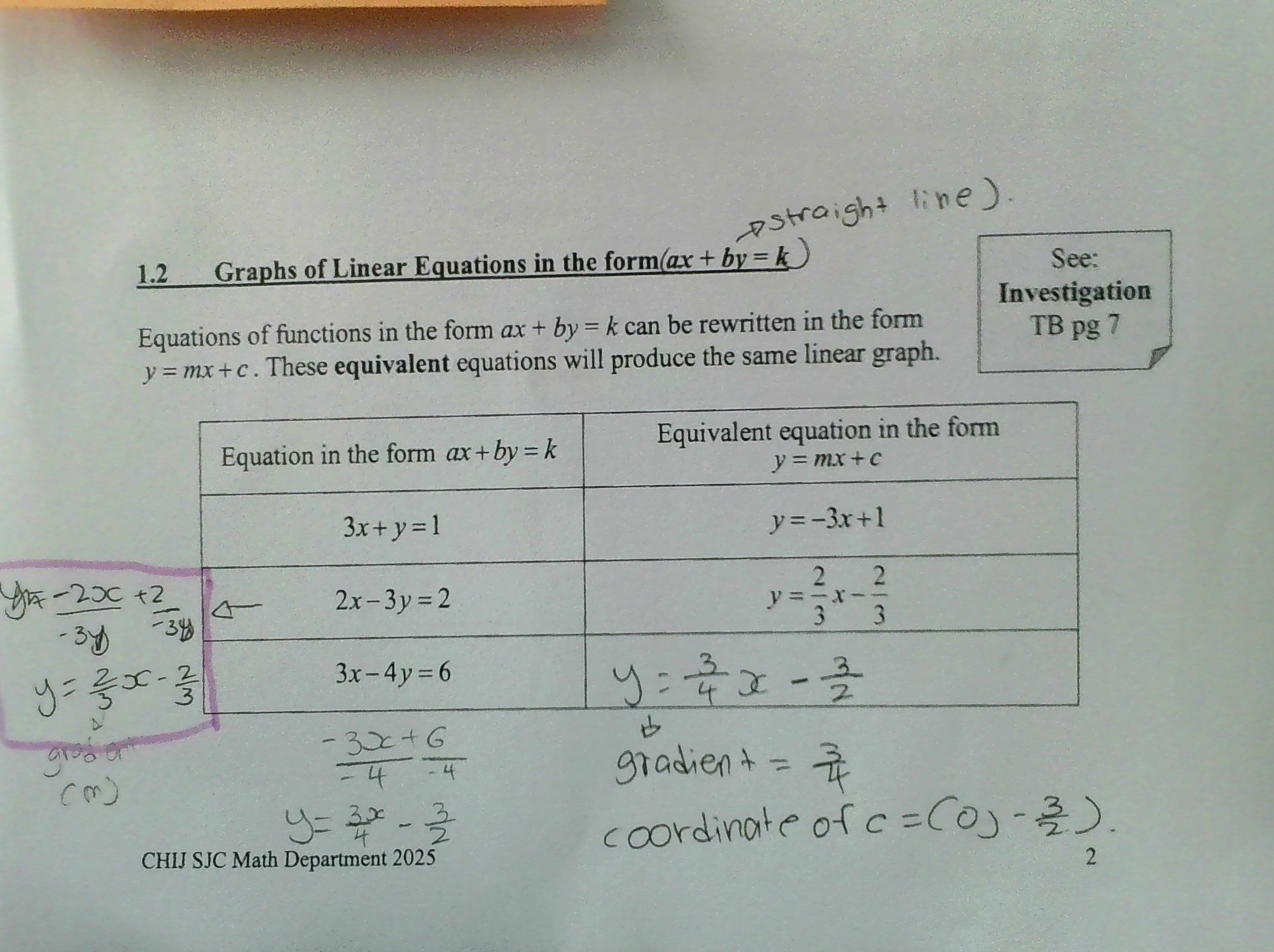Linear graphs and simultaneous linear equations
Equation of straight lines
y= mx+ c —> m= gradient of the line, c= y intercept
gradient of line= y2-y1/ x2-x1 —> find the coordinates by forming a right angled triangle on the line and taking the two coordinates at the start and the end on the triangle.
m and c are constants
horizontal= —
vertical= |
gradient of horizontal line—> y=c —> because a horizontal line does not have a gradient so m, is taken out of the equation.
equation of vertical line—> x=a —> a is the x-intercept on the line.
gradient of vertical line= undefined.
Graphs of Liner Equations in the form of ax+by=k

Solving Simultaneous Linear Equations using Elimination method
Label each of the equations 1 and 2 respectively.
the formula goes, 1-2
if there are no same variable (in the situation you cannot eliminate anything) you should times the or both equations to get the lowest common multiple between them.
the new multiplied equations are called 3 and 4/ or just 3 if only one equation had to be multiplied.
if you had multiplied the/ a equation, the next step would be —> 1/2 -/+ 3/4 —> whether or not you subtract or add depends on the question and the variable. if the variable is a positive and negative than we would add. but if it was a negative and negative, then we would subtract.
after getting the answer to either x or y, you should substitute it with an equation, either 1 or 2 and find out what x/y is (depending on which you found first)
after finding out x/y, you check your answer by substituting both x and y in equation 1/2 (depending on which you didn't use before) and checking if the answer is the same as given in the question.